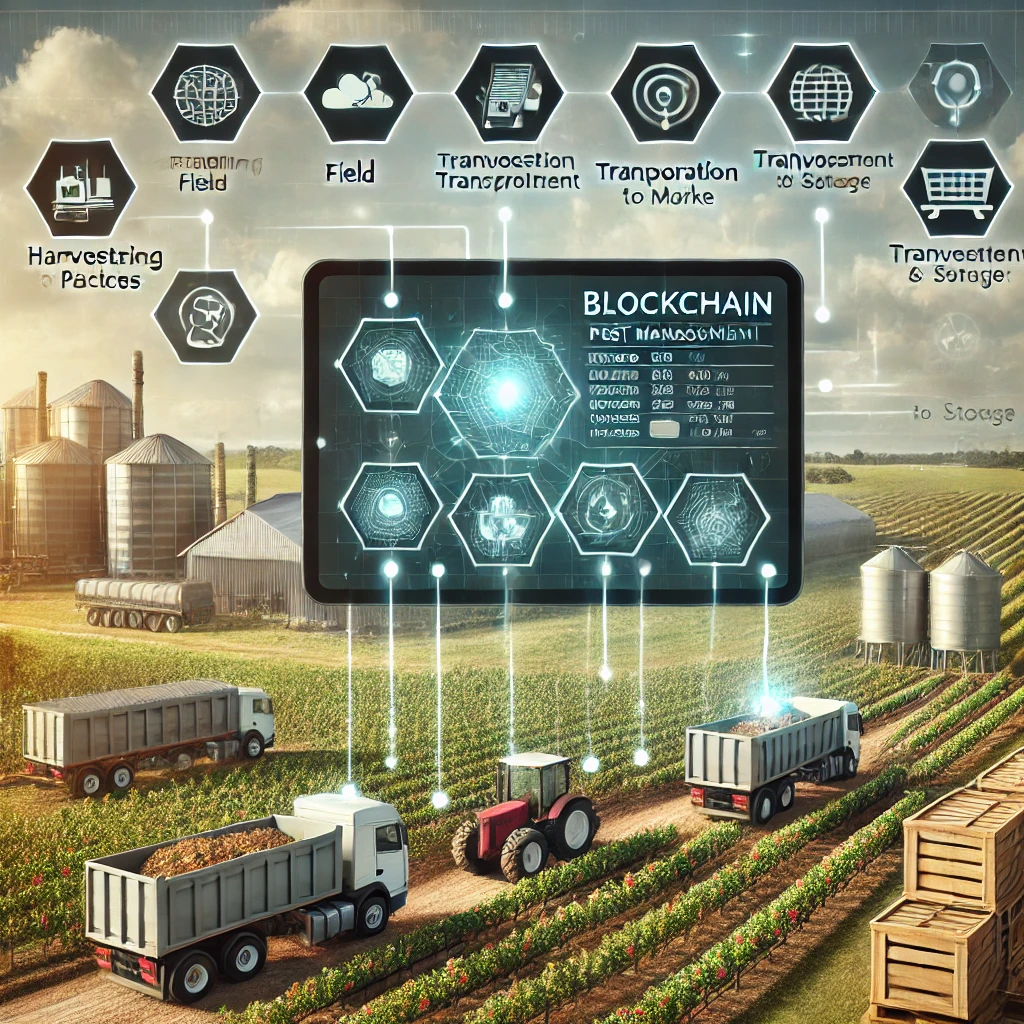
Introduction
Blockchain technology, known for its secure and transparent data management, is increasingly being explored for applications beyond cryptocurrencies. In pest management, particularly within supply chains, blockchain can revolutionize how pest control practices are monitored and managed. This technology offers a robust framework for ensuring transparency, traceability, and efficiency in pest management processes throughout the supply chain.
Benefits of Blockchain in Pest Management
- Enhanced Traceability: Blockchain provides a decentralized ledger that records every transaction related to pest management activities. This feature enhances traceability by documenting each step of the pest control process, from application to inspection and compliance checks. By using blockchain, stakeholders can access an immutable record of pest management actions, ensuring that all procedures are followed and documented accurately.
- Increased Transparency: The transparency offered by blockchain technology helps build trust among supply chain participants. Every transaction related to pest control can be verified and audited, reducing the likelihood of fraud or mismanagement. This transparency is crucial for maintaining standards and regulations in pest management, ensuring that all parties are accountable for their actions.
- Improved Efficiency: Blockchain can streamline pest management processes by automating data entry and reporting through smart contracts. These contracts execute predefined actions when certain conditions are met, such as triggering a pest control action or updating records. By automating these processes, blockchain reduces the need for manual intervention, minimizes errors, and speeds up the response time to pest issues.
- Data Integrity and Security: The decentralized nature of blockchain ensures that data is secure and resistant to tampering. Each block in the chain is cryptographically linked to the previous one, making it virtually impossible to alter historical data without detection. This high level of data integrity is essential for maintaining accurate records of pest control activities and ensuring that all information remains trustworthy and reliable.
Challenges and Considerations
- Integration with Existing Systems: Integrating blockchain technology with existing pest management systems can be challenging. Supply chains often involve multiple stakeholders with diverse systems and processes. Ensuring compatibility and seamless integration between blockchain platforms and current pest management practices requires careful planning and coordination.
- Cost and Complexity: Implementing blockchain technology can be costly and complex, particularly for smaller businesses or organizations. The initial investment in technology and infrastructure, as well as the ongoing maintenance and support, may pose financial challenges. Evaluating the cost-benefit ratio and ensuring that the benefits of blockchain outweigh the expenses is crucial for successful adoption.
- Regulatory and Legal Issues: The use of blockchain in pest management must comply with regulatory and legal requirements. Different regions may have varying regulations regarding data privacy, security, and reporting standards. Ensuring that blockchain implementations adhere to these regulations is essential for avoiding legal complications and ensuring compliance.
Future Directions
- Development of Industry Standards: The development of industry standards for blockchain applications in pest management will be essential for widespread adoption. Establishing best practices and guidelines will help ensure consistency and compatibility across different supply chains and sectors. Collaborative efforts among industry stakeholders and regulatory bodies will drive the creation of these standards.
- Integration with Emerging Technologies: Blockchain can be integrated with other emerging technologies, such as IoT sensors and AI, to enhance pest management capabilities. Combining blockchain with IoT sensors can provide real-time data on pest activity and control measures, while AI algorithms can analyze this data for predictive insights. This integration will further improve the effectiveness and efficiency of pest management strategies.
- Scalability and Adoption: Expanding the use of blockchain technology in pest management will require addressing scalability challenges. As more organizations adopt blockchain, ensuring that the technology can handle increased data volumes and transactions efficiently will be crucial. Promoting awareness and education about blockchain’s benefits will also encourage broader adoption and support within the industry.
Conclusion
Blockchain technology offers significant potential for enhancing pest management in supply chains through improved traceability, transparency, and efficiency. While there are challenges to address, such as integration with existing systems and regulatory compliance, the benefits of blockchain make it a promising tool for modernizing pest management practices. As technology evolves and industry standards develop, blockchain is poised to play a key role in ensuring effective and transparent pest control throughout the supply chain.

